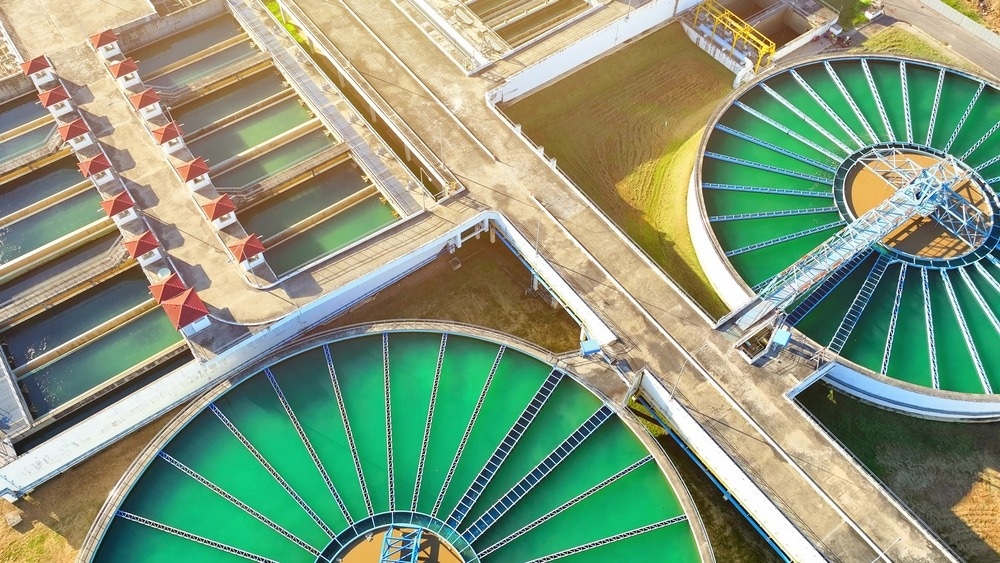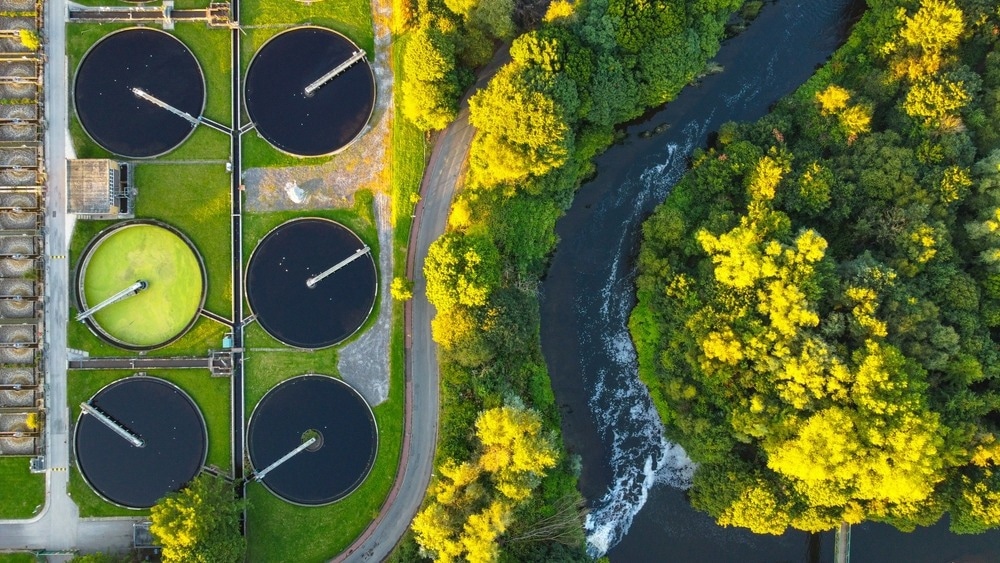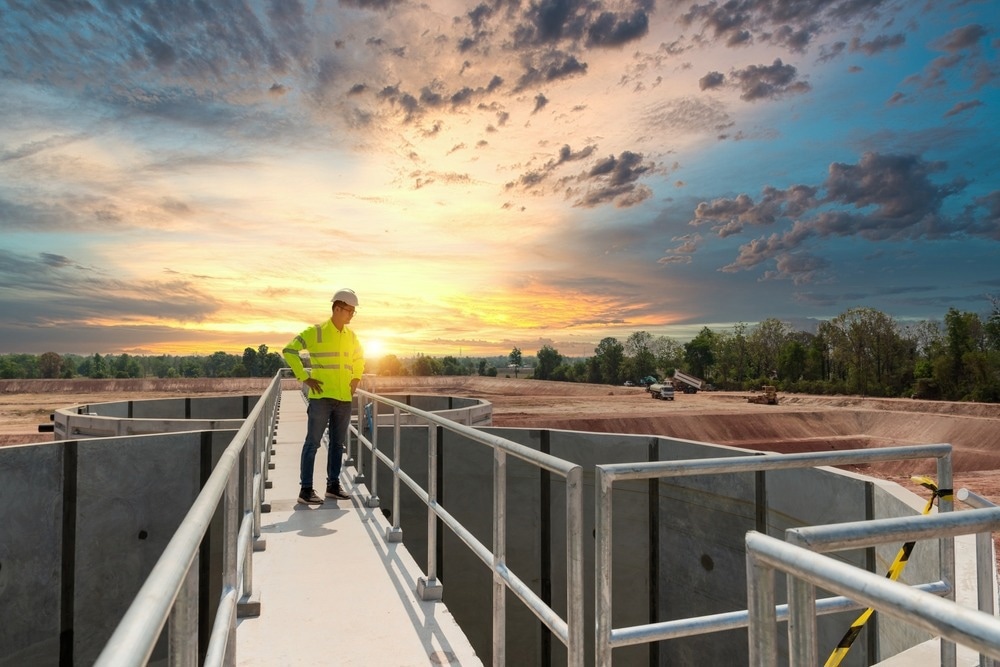In wastewater treatment, monitoring organic loads, particularly Total Organic Carbon (TOC), has become critical to maintaining efficient and effective operations. This is especially true in industries with highly variable waste streams, such as the food and beverage (F&B) sector.
In this interview, Jens Neubauer and Christian Kuijlaars from Veolia Water Technologies & Solutions talk to AZoMaterials about the importance of TOC monitoring and how advancements in TOC technology are transforming wastewater treatment processes.
Why is monitoring organic loads, particularly Total Organic Carbon (TOC), crucial in wastewater treatment?
Jens: In most wastewater, the majority of contaminants are organic, and this is especially true for the F&B sector. Therefore, the main task of a sewage treatment plant is to break down these organic substances and remove them from the wastewater. Process intensification is making wastewater treatment faster and more efficient. This requires constant monitoring of wastewater composition to quickly address any fluctuations, ensuring effective cleaning despite shorter treatment times.

Image Credit: Andromeda stock/Shutterstock.com
Traditional methods for measuring organic waste in water, like chemical oxygen demand (COD) and biochemical oxygen demand (BOD) tests, are too slow -- taking hours up to days -- making them unsuitable for modern, faster treatment processes. COD also required toxic reagents, which is not desirable. Comparatively, organic load monitoring using TOC analysis only takes a few minutes and does not involve toxic reagents. It is well suited for process analysis and also delivers more accurate results. This transition towards TOC measurement is also reflected in the latest EU standards regarding discharge control, in which TOC measurement is the preferred method. The Commission Implementing Decision (EU) 2016/902 established the best available techniques (BAT) conclusions under Directive 2010/75/EU for common wastewater treatment/management systems in the chemical sector. Subsequent BAT decisions can be referenced on this topic as well.
What role does TOC monitoring play in maintaining the efficiency and effectiveness of wastewater treatment systems?
Jens: TOC monitoring provides valuable information on carbon loading at various points in the process.
Monitoring TOC before biological treatment allows it to detect disturbances in carbon loading and divert it to buffer tanks as needed. This can avoid overloading the biology and returning it to the process at a later stage, allowing for the safe and stable operation of the plant. Measuring TOC before and after the settling step also allows operators to control coagulant dosing by optimizing carbon addition so as not to starve or overfeed the bacteria in aeration tanks and/or during the anoxic phases.
TOC monitoring provides information on carbon levels at the discharge point and removal efficiency. Monitoring TOC after secondary sedimentation provides real-time measurements of carbon released into the environment and proves that limits are met. Furthermore, organics monitoring provides information on carbon levels to optimize tertiary treatment for reuse purposes and can help optimize chemical dosing, membrane pre-treatment, and ozone and UV dosing.
Anaerobic reactors are often employed to treat highly contaminated wastewater. What are some of the unique challenges presented by such highly contaminated waste streams?
Christian: Due to the highly concentrated nature of these streams, the impact of variation directly affects the stability of operations. Anaerobic systems operate best when they receive a constant and stable organic load and quality. When that varies due to deviations in production, which is quite common in industrial wastewater, flexibility and efficiency drop. This has an immediate impact on performance, chemical consumption, and increased requirements of post-treatment and biogas production. Therefore, a more stable wastewater feed will not only affect the anaerobic treatment itself but also the various systems surrounding it (aerobic, tertiary, biogas, etc.).

Image Credit: izzet cakalli/Shutterstock.com
In anaerobic reactor applications, what factors make it complicated to accurately monitor TOC levels, and how can these challenges be surpassed?
Jens: Typically, the biggest challenge is the high levels of contamination within the wastewater that requires treatment in an anaerobic reactor. This affects sample preparation, as the water often contains particles and can also contain fats, oils and grease (FOG) components. In order to prevent blockages, it is helpful if the process TOC analyzer has an internal diameter in the sample path that is not too small. There should also be extensive cleaning and backwashing options that can be individually adapted to the requirements of the sample matrix.
A powerful and robust decomposition technology is required to ensure complete recovery of the organic carbon, even if it comes from compounds or particles that are difficult to break down.
In the F&B sector, in particular, the load fluctuates greatly over the course of a day. Cleaning cycles between batches often also affect the pH value.
One device that overcomes all these challenges is the Sievers TOC-R3 from Veolia Water Technologies & Solutions. The TOC-R3 is an advanced water monitoring device that uses high-temperature combustion without catalysts, a narrow 2 mm sample path, self-cleaning option, and pH regulation to reliably and safely measure contamination in even the dirtiest water samples.
Can you discuss the impact of fluctuating organic loads on the stability and performance of anaerobic reactors and how TOC monitoring can help manage these fluctuations?
Christian: The impact of fluctuating organic loads is significant and requires constant adaptation and adjustments of the biomass. Without fluctuations, the biomass is able to operate more efficiently, thus reducing chemical usage, increasing removal efficiency and, thereby, biogas production, and finally stabilizing biomass growth (a clear indicator of a healthy system). The biggest impact of fluctuating organic loads is on the post-treatment. Efficient operating systems create a very stable and cleaner effluent. Such efficiency reduces operating costs on the aerobic post-treatment in electrical and sludge dewatering/disposal and chemical consumption. In addition, efficiency leads to an increase in biogas production.
What are some best practices for integrating TOC monitoring into anaerobic reactor operations, particularly in challenging industrial applications?
Christian: TOC monitoring should deliver stable effluent to the main anaerobic system. Correctly applied, it provides the data that allows the control system to divert high-concentrated streams to a divert tank, increase or decrease the feed pump to the conditioning tank, and manage buffer tank levels to create a fully stable load on the anaerobic system.

Image Credit: Tong_stocker/Shutterstock.com
How have advancements in TOC monitoring technologies improved the ability to manage and optimize anaerobic treatment processes?
Jens: We have already mentioned the challenging requirements of online TOC measurement for this application. The primary need is the robustness of the analyzer and the reliability of the measurement. Low and simple maintenance, low reagent consumption, and low operating costs also play a role for the user. All of these aspects, as well as past experiences, were taken into account when developing the Sievers TOC-R3, the latest TOC process analyzer on the market from Veolia. The TOC-R3 has all the technical prerequisites to ensure seamless monitoring of the feed stream, without which process-controlled optimization and efficiency improvements are not possible.
To ensure comprehensive wastewater treatment, what key parameters should be considered alongside TOC when monitoring anaerobic reactors?
Christian: Default parameters include pH and temperature and biogas flow/quality. Other parameters, such as nitrogen (N) and phosphorous (P), are not critical and can be handled by operator personnel.
pH and temperature ensure a healthy environment for the biomass, and biogas flow and quality are good indicators of healthy operation.
What trends or innovations in TOC monitoring do you foresee that could further enhance its application in anaerobic reactors and other advanced wastewater treatment systems?
Jens: Water is becoming an increasingly scarce resource worldwide. This means that the treatment and reuse of wastewater are becoming more important. At the same time, regulatory discharge requirements for wastewater quality are increasing, as well as the technical and energy expenditure for wastewater treatment.
To meet regulatory requirements, more powerful and efficient technologies are being developed. This affects not only the area of anaerobic degradation but also all areas in a wastewater treatment plant, such as the increasingly widespread use of membrane technologies in the secondary and tertiary treatment stages. In order to make optimal use of these technologies and to be able to react quickly to changes in the process, close monitoring is necessary, which calls for an online monitoring tool. In terms of organic contamination, TOC analysis offers the best way to provide the required process data. In the future, more and more plants will be equipped with TOC process analyzers. When the plants are remote and operated unmanned, topics such as self-monitoring, remote maintenance, and IIoT become important. As a state-of-the-art analyzer, the Sievers TOC-R3 has already implemented these innovations and is, therefore, ready for the future.
Where can readers find more information?
https://www.watertechnologies.com/products/sievers-analyzers-and-instruments
https://www.watertechnologies.com/sievers-resource-center
https://www.biothanesolutions.com/
About Jens Neubauer
Jens Neubauer is a Chemical Engineer with over 20 years of experience in water analysis across various positions. His career spans roles as an Application Engineer and Field Application Specialist, supporting water and process monitoring needs within industrial applications. In 2018, Jens joined Veolia Water Technologies & Solutions as an Application Specialist for Sievers Analytical Instruments. Throughout his tenure with the company, he has consistently demonstrated his expertise in supporting customer-focused Total Organic Carbon (TOC) analysis and monitoring needs.
Jens' comprehensive understanding of industrial processes, combined with his in-depth knowledge of water and process monitoring technologies, allows him to provide tailored solutions to complex challenges. His ability to bridge the gap between theoretical knowledge and practical application has made him a valuable asset in optimizing water management and process efficiency for numerous clients.
About Christian Kuijlaars
Biochemical engineer with more than 15 years of experience in industrial water treatment. Proven track record in projects, processes, and sales in a variety of industries across the globe. Focusing on sustainable solutions to bring effluent treatment and industrial water management to the next level. Worked in areas such as anaerobic water treatment, nutrients for water treatment, biomass, and services. Knowledge of sustainable technologies in processes and development. Customer process-oriented and project-dedicated with a holistic view not only for the project but for the entire water management at the client’s location, energetic team player, enthusiastic and pragmatic approach to projects. Working at Biothane for more than 10 years in process and sales positions.
About Veolia
As a leading manufacturer of TOC monitoring instruments, Veolia Water Technologies & Solutions provides innovative technology, superior quality, and best-in-class support through its Sievers Instruments product line. Sievers TOC analyzers cover a dynamic analytical range from 0.03 ppb up to 50,000 ppm and enable simpler water quality monitoring, process control, and compliance.
Disclaimer: The views expressed here are those of the interviewee and do not necessarily represent the views of AZoM.com Limited (T/A) AZoNetwork, the owner and operator of this website. This disclaimer forms part of the Terms and Conditions of use of this website.